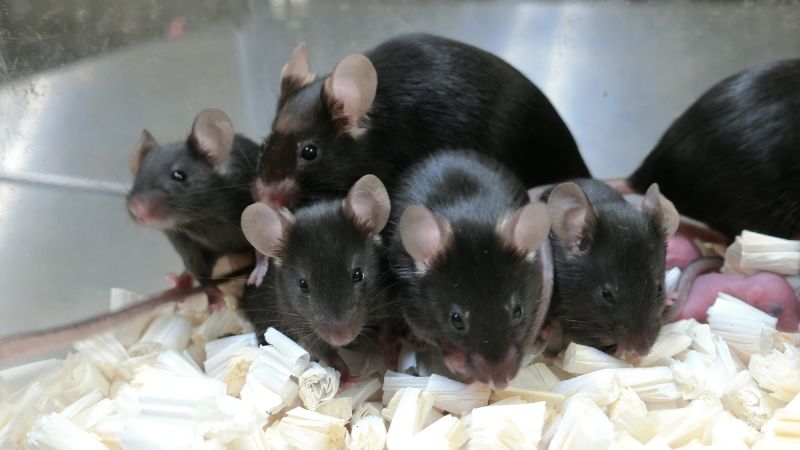In recent years, humanity has encountered numerous challenges on Earth, ranging from worldwide pandemics to extreme weather events and natural disasters. These experiences have reinforced the idea among certain futurists that humans may need a backup location beyond our home planet. Proponents of space colonization propose establishing habitats on celestial bodies like the Moon or Mars as a form of insurance against potential extinction caused by catastrophic events or self-destructive behavior.
However, despite fervent interest, we still grapple with many uncertainties regarding our capacity to survive and procreate in space, particularly among mammals. An intriguing avenue to explore this is through freeze-dried mouse sperm, now stored in a radiation protection unit aboard the International Space Station (ISS). This venture aims to provide essential insights into mammals’ reproductive abilities outside Earth.
Upon their return to Earth next year, Teruhiko Wakayama, a professor at the University of Yamanashi’s Advanced Biotechnology Centre, intends to analyze these samples to investigate the effects of the space environment on sperm viability. This study is crucial for assessing whether it is possible to generate healthy offspring under extraterrestrial conditions. In the course of this research, Wakayama is also in the process of developing a device that would enable astronauts to perform in vitro fertilization (IVF) on rodents aboard the ISS in the upcoming years. Ultimately, he believes that such experiments may play a pivotal role in ensuring humanity’s survival.
Wakayama’s ambitious goal is to establish a method for securely maintaining Earth’s genetic diversity in a space environment—whether that be on the Moon or another destination—so that life can be resurrected even after a cataclysmic event on Earth. His efforts may seem reminiscent of science fiction narratives, but Wakayama has a history of pioneering reproductive studies that echo these dreams. Notably, in 1997, he and a colleague developed a groundbreaking method that led to the cloning of the first mouse from adult cells.
Moreover, he previously led research into the development of mouse embryos in space, a feat previously witnessed only in lower life forms like amphibians and fish. His team also innovated a technique that allowed them to freeze-dry mouse sperm for storage aboard the ISS for durations extending up to six years. Following their retrieval, they managed to rehydrate these specimens and successfully produce healthy offspring.
From earlier experiments, Wakayama’s team determined that freeze-dried sperm could retain viability for up to 200 years in space. Although this finding is encouraging, he acknowledges that the preservation period is “absolutely not long enough for our future.” He is now experimenting with new techniques to safeguard sperm at room temperature from radiation in hopes of achieving the goal of indefinite storage in space.
For decades, scientific inquiry into the effects of microgravity and cosmic radiation on biological functions, including reproduction, has been ongoing. For instance, in 1989, 32 fertilized chicken eggs were launched into orbit, an experiment humorously dubbed “Chix in Space,” sponsored by the American fast-food chain KFC. Additionally, tadpoles aboard the Space Shuttle Endeavour in 1992 became the first vertebrates to hatch in space.
In 2007, a cockroach named Nadezhda, translating to “Hope” in Russian, gave birth to offspring conceived in orbit, which displayed slight anomalies. Virginia Wotring, a professor at the International Space University in Strasbourg, France, has observed that portions of the reproductive cycle can be accomplished in space for certain species, albeit with varying success. While species like medaka fish and snails have successfully completed their reproductive cycles in space, the research on mammals is still in its infancy.
When it comes to the mouse sperm being stored on the ISS, it is anticipated to return to Earth in 2025 for further study. Wakayama’s overarching ambition is to ultimately preserve reproductive cells indefinitely at room temperature.
As efforts progress, the path toward establishing a multi-planetary species remains arduous. The NASA-led Artemis program is set to return astronauts to the Moon by late 2026 for the first time since 1972, paving the way for future lunar habitation. Similarly, SpaceX founder Elon Musk suggests we may witness the first crewed mission to Mars within the next four years.
Nevertheless, the perils of space travel present significant challenges to human health. Cosmic radiation poses serious risks of DNA mutations linked to cancer, while microgravity can lead to vision problems, impaired immune responses, and muscle and bone atrophy. Therefore, experts like Wotring emphasize that matters of immediate concern for astronauts, such as their health and well-being, must take precedence.
Despite these pressing issues, Wakayama remains steadfast in his belief that understanding reproduction is critical as space travel becomes more frequent. Damaged DNA in reproductive cells, for instance, could lead to genetic defects in future generations. Furthermore, without the stabilizing force of gravity, the appropriate development of fertilized embryos may be jeopardized.
Wakayama hopes to focus



